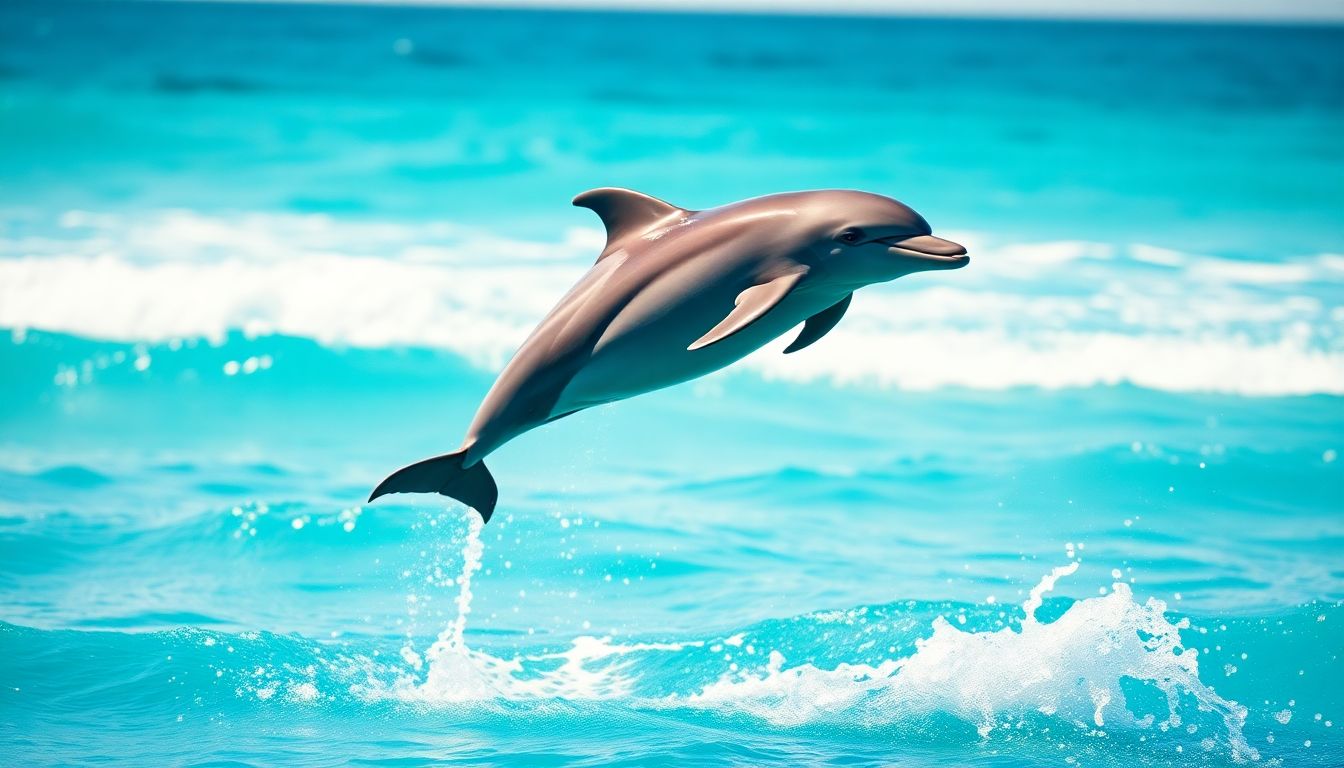The graceful leaps of dolphins are captivating to witness. They jump out of water, performing acrobatic feats that leave us in awe. But why do they do this? What drives these amazing creatures to take flight through the waves? In this article, we’ll explore the fascinating world of dolphins jumping out of water and uncover the reasons behind their spectacular displays.
[See also Discovering the Mediterranean Sea Bass: All You Need To Know].
The Allure of the Leap: Why We’re Fascinated by Dolphin Jumps
Dolphin jumps are not just visually stunning; they also provoke feelings of joy and wonder. Watching these creatures breach the surface creates a connection between humans and marine life. Whether in an aquarium or the wild, seeing a dolphin leap can evoke excitement and inspire a deeper appreciation for ocean ecosystems.
More Than Just a Splash: The Significance of Dolphin Behavior
Dolphins jumping out of water is more than just a fun activity. It serves multiple purposes that influence their social structures, hunting strategies, and communication methods. Each jump is a glimpse into their world, revealing the intelligence and complexity of these marine mammals.
What This Article Will Cover
- The physics behind dolphin jumps
- Social aspects of jumping behaviors
- Hunting techniques involving jumps
- The importance of jumps in navigation
- Conservation efforts for protecting dolphins
The Mechanics of a Dolphin Jump: Physics in Action
Hydrodynamics and Propulsion: How Dolphins Generate the Power
Dolphins are built for speed and agility. When they perform jumps, they utilize their powerful bodies to push against the water. Here’s how it works:
- Lift-off: Dolphins create strong thrust by curling their bodies and using their flukes to propel themselves out of the water.
- Hydrodynamic design: Their streamlined shape minimizes drag, allowing for smooth and efficient jumps.
The Role of Flukes and Body Shape in Aerial Acrobatics
The flukes, or tails, of dolphins enable spectacular aerial maneuvers. They can gain significant height due to the combined force of their tail strokes and body shape. This design is essential for maximizing lift and achieving impressive leaps.
Energy Expenditure and Efficiency of Jumping
Jumping requires energy, but dolphins have adapted to make these actions efficient. By timing their movements perfectly, they minimize the energy spent on each jump, ensuring they can leap repeatedly without exhausting themselves.

Why Do Dolphins Jump? Communication and Social Dynamics
Breaching as a Form of Communication: Signaling and Interaction
Dolphins often jump out of water as a way to communicate with each other. Breaching can signal:
- Excitement: Indicating play or social bonding activities.
- Alertness: Drawing attention to potential dangers or changes in the environment.
Social Bonding and Play: Jumps as Expressions of Playfulness
Jumping is also a form of play. Dolphins engage in synchronized leaping, fostering relationships among pod members. This playful interaction strengthens bonds and contributes to the group’s overall well-being.
Establishing Hierarchy and Dominance Through Aerial Displays
Aerial displays can signify dominance within pods. The larger and more impressive the jump, the stronger the message of authority. This behavior helps maintain social order among dolphins.
Hunting Strategies and Prey Acquisition: Jumping for Food
Stunning Prey from Above: A Unique Hunting Technique
Dolphins may use jumps as a technique to surprise their prey. By breaching the surface, they can:
- Observe potential food: Spot fish from above the water.
- Launch surprise attacks: Catch fish off guard upon landing.
Cooperative Hunting: Utilizing Jumps in Group Foraging
Many dolphin species hunt in groups, coordinating their jumps to drive fish towards shallower waters. This teamwork increases their chances of a successful catch, showcasing their intelligence and social behavior.
Examples of Dolphin Species Employing Jumping in Hunting
- Bottlenose dolphins: Known for their agility and use of jumps in hunting.
- Orcas: Often breach as a way to herd fish.
Navigation and Orientation: Using Jumps to Survey the Surroundings
Aerial Views for Navigation: Assessing the Environment
When dolphins leap, they gain a better vantage point. This helps them navigate through complex environments and locate food sources.
Detecting Predators and Prey from a Heightened Perspective
Jumping allows dolphins to identify both threats and opportunities. The height gained during a leap provides valuable information that assists in decision-making.
Impact on Spatial Awareness and Route Planning
Regularly utilizing jumps can enhance a dolphin’s spatial awareness, allowing for more effective route planning and navigation in the vast ocean.
Conservation and the Future of Dolphin Jumps: Threats and Protection
Habitat Loss and Pollution: Threats to Dolphin Jumping Behaviors
Dolphins face numerous threats, including habitat loss and pollution. These issues can not only affect their jumping behavior but also their overall health and well-being.
Anthropogenic Impacts on Dolphin Behavior: Noise Pollution and Disturbances
Noise pollution from boats and industrial activities disrupts dolphins’ natural behaviors, including jumping. Loud sounds can interfere with their communication methods and social interactions.
Conservation Efforts: Protecting Dolphins and Their Jumps
Numerous organizations work to protect dolphins and their habitats, employing strategies such as:
- Legislation: Enforcing laws that aim to reduce pollution.
- Awareness campaigns: Educating the public about the importance of preserving these amazing creatures.
Conclusion: A Deeper Appreciation for Dolphin Leaps
Key Takeaways: Understanding the Reasons Behind Dolphin Jumps
Dolphins jumping out of water serves many purposes beyond entertainment. These leaps signify communication, play, hunting tactics, and navigation strategies.
Further Research and Exploration: Unanswered Questions about Dolphin Behavior
While we have learned much about dolphins, many questions remain. Researchers continue to study their behaviors to uncover new insights. Check out more here.
Inspiring Conservation Action: Protecting these Magnificent Creatures
Understanding the importance of conservation efforts is crucial for the future of dolphins. By protecting their habitats, we can ensure that we continue to enjoy these remarkable marine mammals and their incredible jumps for generations to come.








